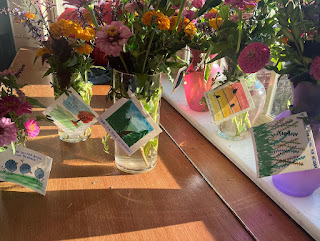All I Really Need to Know About Being an Engaged Neighbor I Learned in the College Dorm
Most of what I know about being a good neighbor, I learned not in a quiet suburban neighborhood or bustling city street but in the lively, unpredictable halls of my college dorm.
That first year of dorm living was a crash course in coexisting with others, learning to balance independence with community, and understanding the small but powerful ways we can support those around us.
I also learned to sleep lightly in case of pranks! But all-in-all, looking back, the lessons from those years still shape the way I engage with my neighborhood today.
So when I consider that I learned in college everything I need to know to be an engaged neighbor, and write down those ideas, this is a few of the items on my list.
1. Say Hello—It Matters
In the dorms, a friendly “Hey” in the hallway made all the difference. That simple gesture turned strangers into familiar faces and familiar faces into friends. The same applies to our neighborhoods. A wave, a smile, or a quick greeting can create a sense of belonging and make our community feel more connected.
2. Respect Shared Spaces
Whether it was the communal bathrooms, the tiny kitchen, or the study lounge, respecting shared spaces was key to dorm survival. Leaving things clean, keeping noise levels down, and being mindful of others’ needs made the experience better for everyone. The same principle applies to neighborhood parks, sidewalks, and shared amenities—keeping them tidy and treating them with care benefits the whole community.
3. Noise Control is Neighborly
Dorm life quickly taught me that what seemed like a fun, spontaneous karaoke session at midnight wasn’t always appreciated by the person next door trying to sleep. Learning when to be loud and when to keep things quiet is a crucial part of being a good neighbor. Whether in a dorm or a house, being mindful of music, parties, and general noise levels shows consideration for those living around you. Being quiet however does not mean you never do these things and it also does not mean you never have contact with your neighbors.
4. Look Out for One Another
The best dorm communities were the ones where people had each other’s backs. Someone would knock on your door if you overslept for an exam, lend you a charger when yours mysteriously disappeared, or walk with you to the dining hall when you needed company. In a neighborhood, this means checking in on elderly neighbors, keeping an eye on each other’s homes when someone is away, or offering help when someone is in need.
5. Share and Swap
Dorm life was full of borrowed coffee mugs, swapped textbooks, and shared late-night pizza. It fostered a sense of generosity and trust. That same spirit can thrive in a neighborhood—whether through lending tools, organizing a book exchange, or simply sharing garden produce with those next door. Small acts of generosity build a culture of goodwill.
6. Be Open to Unexpected Friendships
Dorms bring together people from all walks of life, and some of the best connections happen between the most unlikely pairs. That holds true for neighborhoods, too. The person down the street might become your go-to for home improvement advice, or the retiree next door might surprise you with the best baking tips. Being open to friendships beyond our usual circles enriches life in unexpected ways.
7. Celebrate Together
Some of the best dorm memories come from spontaneous game nights, birthday celebrations in the hallway, or themed potlucks. Celebrating milestones—big or small—strengthens community bonds. In neighborhoods, this could mean block parties, holiday decorations, or even just a small gathering to welcome new residents. Sharing joy brings people closer together.
8. Resolve Conflicts with Respect
Disagreements are inevitable, whether about dorm room thermostats or whose turn it is to take out the trash. The key was addressing conflicts directly, calmly, and with an open mind. The same applies to neighborhood disputes—whether it’s about parking, property lines, or noise complaints, a little patience and communication can go a long way in maintaining peace.
9. Be Present
One of the greatest lessons from dorm life was simply showing up. Whether it was for a group study session, a dorm meeting, or a friend who needed support, being present strengthened relationships. The same principle applies in a neighborhood—being visible, engaged, and involved fosters a strong sense of community.
10. Kindness is Contagious
A kind dormmate who left encouraging notes on doors or baked cookies for the floor inspired others to do the same. Kindness has a ripple effect, and in a neighborhood, small acts—helping someone carry groceries, leaving a thoughtful note, or simply being considerate—can create a culture of warmth and generosity.
Dorm life may have been chaotic, loud, and sometimes frustrating, but it was also a masterclass in community building. The lessons I learned there continue to shape how I interact with my neighbors today. Because at the end of the day, whether in a dorm or a neighborhood, we all want the same thing—to feel connected, respected, and at home.
MORE INFORMATION
Take the Engaged Neighbor pledge and become part of a movement! The pledge outlines five categories and 20 principles to guide you toward becoming an engaged neighbor. Sign the pledge at https://nomoregoodneighbors.com. Individuals who take the pledge do get special invitations to future events online and in person. Contact the blog author, David L. Burton via email at dburton541@yahoo.com or visit his website at http://engagedneighbor.com.





Comments
Post a Comment